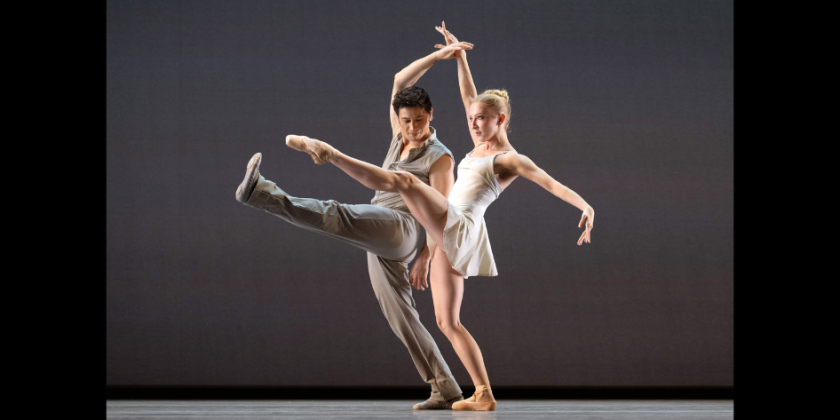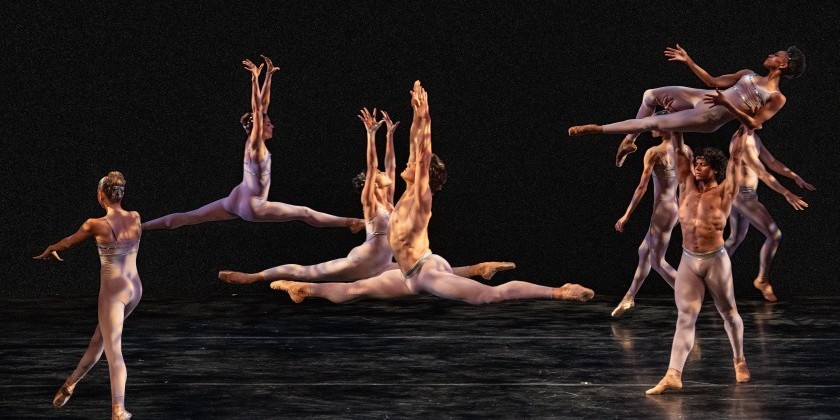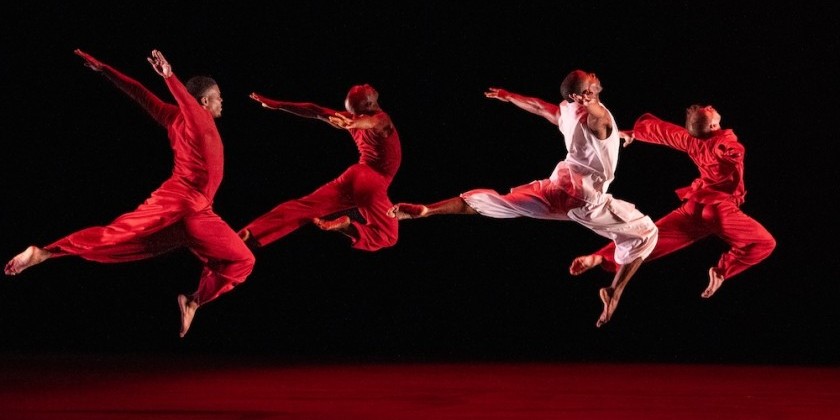IMPRESSIONS: Dance Theatre of Harlem Celebrates Virginia Johnson at City Center
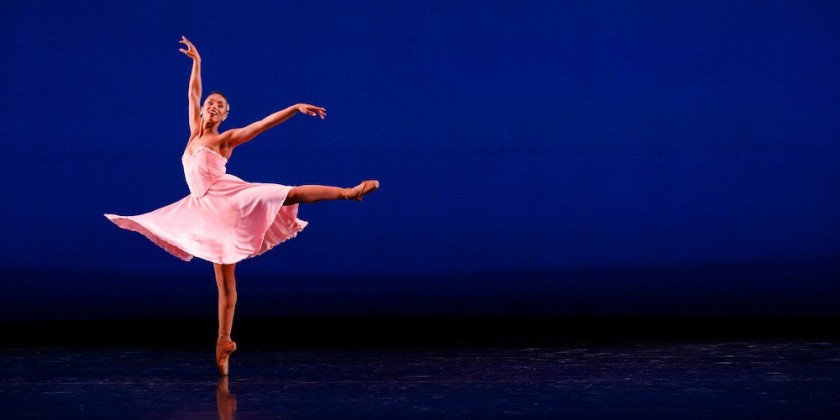
Two Distinct Programs Feature
Premieres by William Forsythe and Tiffany Rea-Fisher
Plus Works by Robert Garland, Nacho Duato, Geoffrey Holder and More
Dates: April 19 - 23, 2023
After a dozen years as artistic director of Dance Theatre of Harlem, Virginia Johnson will leave her post to her mentee, Robert Garland, this summer. The company’s spring season, April 19-23, at New York City Center, bade her farewell and celebrated her tenure. Johnson re-launched the company after financial difficulties required a hiatus from 2004 to 2012, when only the school was in operation.
Founded by Arthur Mitchell and Karel Shook in 1969, DTH has been the major force in US-American ballet to place African-American dancers center stage. Thankfully, other companies are finally starting to catch up in diversifying their ranks, and DTH will eventually have to redefine itself.
One way to go is to commission new work from master choreographers. Another is to look back at treasures from yesteryear that set the company apart.
.%20Photo%20by%20Theik%20Smith.jpg)
William Forsythe is in his fifth decade at the forefront of innovation in ballet. It is high time for the company to acquaint itself with his visionary approach, which includes an improvisatory process (think Alwin Nikolais) and adds directional facets to ballet’s space grid by tilting and twisting the body’s torso and limbs (think Merce Cunningham).
A program note by the choreographer explains the motivation for his BLAKE WORKS IV, subtitled THE BARRE PROJECT. This ballet was “…conceived at the height of the pandemic as an homage to the legions of dancers who, while holding on to any available piece of domestic furniture, attempted to sustain their professional abilities with at home barre exercises.”
A series of solos at a short piece of barre plays with classical ballet vocabulary and uses the barre as a safe space. The barre is home. It lends support. It is a trusted friend.
If there is an encounter with another person, it is fleeting and the work for sixteen dancers on this opening night of the company’s all too brief New York season shows off each one. Forsythe’s movement vocabulary presents a welcome challenge, which these performers meet with glee.
I have just barely noticed the isolation of the individuals, when a salsa-inspired pas de deux breaks up the continuous stream of solo dances. What a celebration! As much as one enjoys dancing alone, dancing with a human partner doubles the fun. Following a string of solos, the duet reminds one of all the added possibilities of push and pull that only another living and breathing fellow dancer can make happen. Barre be gone! Using a social dance form as the basis of this union is ingenious. Isn’t that what we all longed for during the pandemic — to be social, to dance, to be with someone? For this audience member, Forsythe timed it perfectly. I needed this duet.
However, the giddiness subsides when the next round of solos ensues. Does Forsythe insinuate the possibility of another wave of forced isolation? I twitch uncomfortably in my seat, but am drawn back into the fantastic dancing of soloists who cross the space with hops, skips, leaps, and all kind of jumps, in which the dancers beat their legs multiple times against each other. Batterie is the ballet term for it, and the dancers’ batteries are charged! Now the barre only occasionally serves as a home base to return to, but the focus evolves away from it.
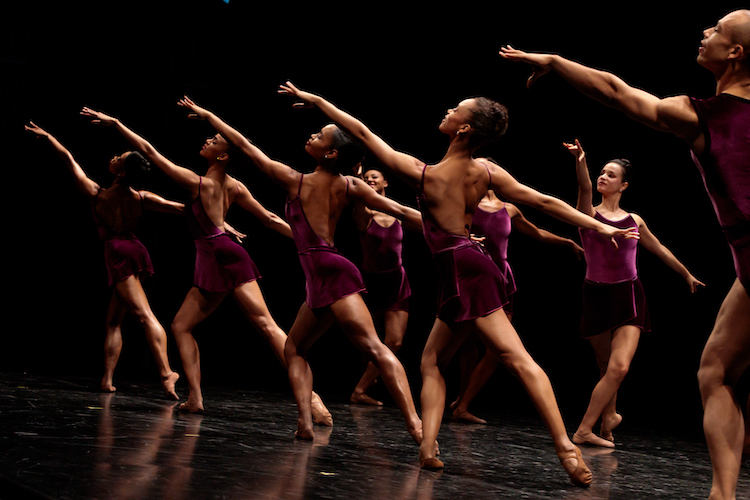
The piece ends with about a minute of vigorous group dancing, in which Forsythe asserts that he is not only a master of solos and duets but also knows how to weave together a group of dancers in exhilarating ways. The curtain descends on what I interpret to be a hopeful community that has newly formed. The mostly young dancers are ready for a new chapter. The bows and the thunderous applause confirm that both dancers and audience feel invigorated and look forward to more new and exciting work.
Dougla, Geoffrey Holder’s 1974 work, which the company revived in 2018, was only shown on this season’s gala evening. It certainly qualifies as a dance that sets DTH apart in a most colorful way and is a treasure worth holding on to.
Arthur Mitchell’s long-term association with choreographer George Balanchine is yet another cornerstone of the company’s history. In New York, one enjoys the Balanchine canon at City Ballet. Performing the same repertoire invites comparison, and since DTH does not have a live orchestra, the dancers must be exceptional to make up for it. In the 1956 Allegro Brillante, which entered DTH’s rep in 1975, Amanda Smith and Kouadio Davis rise to the occasion, and the corps de ballet is in fantastic form. This 13-minute ballet is the perfect homage to Mitchell’s ties to Balanchine.
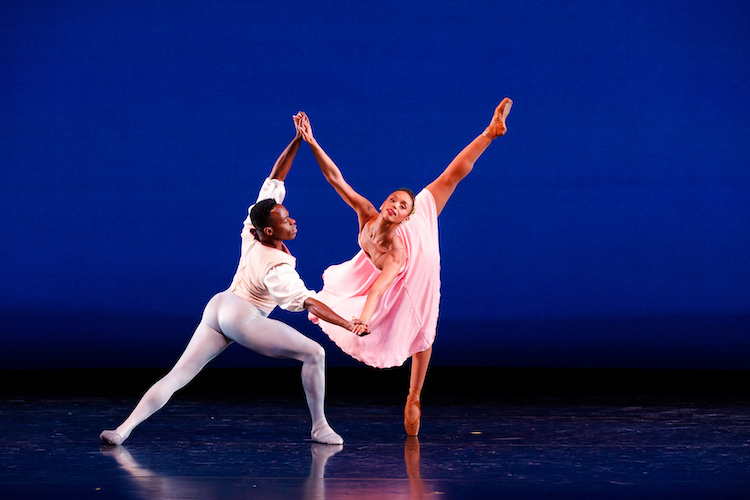
Some of the recent infusion of grant money must have been spent on training. What a joy to see brilliant dancing in these technically challenging works.
An engaging short documentary by Nel Shelby Productions sheds light on piano virtuoso Hazel Scott, a Trinidadian artist and long-time Harlem resident. Sounds of Hazel seems like a perfect idea for this company. Choreographer Tiffany Rea-Fisher’s movement vocabulary feels oddly mismatched with the virtuosity the dancers are capable of, however, because it does not explore the possibilities of the pointe shoe. A recording of Hazel Scott’s voice, passionately speaking about “What America Means to Me” forms a centerpiece between the stations of a life that takes her from Trinidad to Harlem to Paris (to the sounds of “La Vie en Rose”) and back. A soundscape created by composer Erica “Twelve 45” Blunt and Mix Engineer Kia “The Mix Artist” Shavon also incorporates the voice of Scott’s husband, none other than Adam Clayton Powell III. Unfortunately, we do not get to hear enough of Scott’s music, represented here by Chopin’s Minute Waltz and Ellington’s The Jeep Is Jumpin’. This outstanding musician deserves another ballet.
.jpg)
The opening night also features the fine pairing of Yinet Fernandez and Dylan Santos in Christopher Wheeldon’s pas de deux This Bitter Earth from 2012. This duet has been in City Ballet’s rep, and Johnson acquired it for DTH in 2018. If the voice of Dinah Washington is the reason to present it, I wonder why Johnson did not opt for a new work to honor Washington and to distinguish the company by choosing rep not done just a few blocks away.
The second program, called “Repertory Favorites,” opens with Garland’s Higher Ground. Premiered only last year, the work strings together a half dozen Stevie Wonder tunes and pleasantly shows off the company’s beautiful and accomplished dancers with a sense of community. It’s not an easy feat to pull off the equivalent of ‘easy listening’ in movement, but Garland and his dancers manage to do just that.
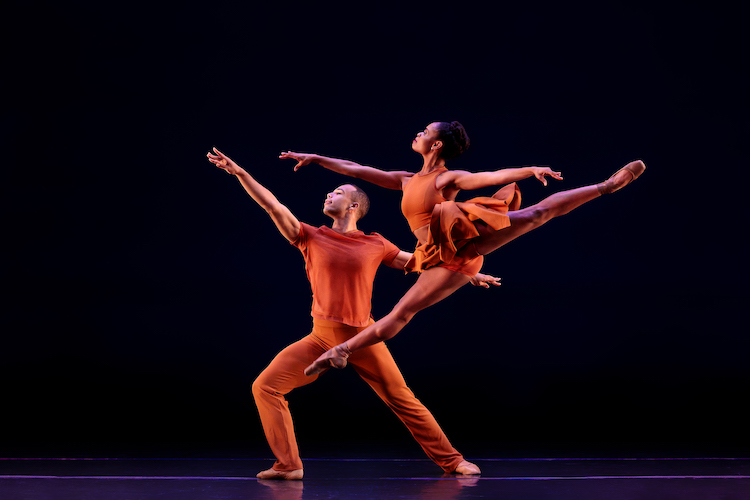
Stanton Welch’s Orange (from 2001), set to Vivaldi, features traditional and skilled partnering for three couples. The men stalwartly support, lift, and drag the women, who, in addition to conventional steps, perform some superfluous, ornamental moves such as shaking their heads and their rib cages. Why Johnson added this work in 2019, and proclaims it a favorite, puzzles me. How refreshing it is to see, in contrast, an emancipated couple in Helen Pickett’s When Love, to music by Philip Glass.
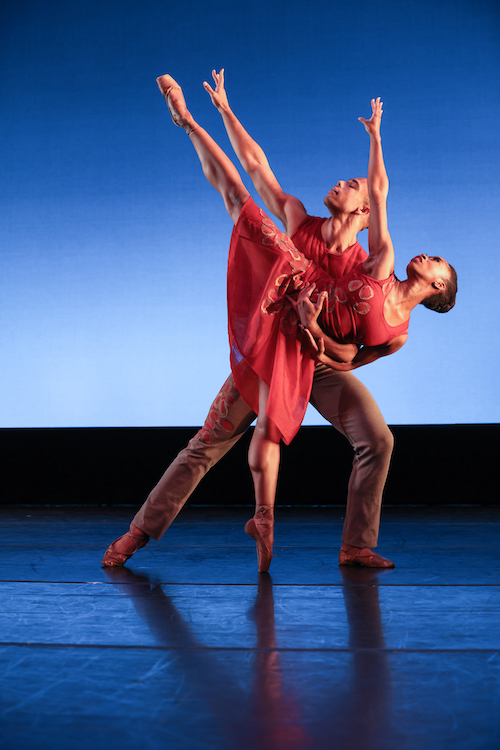
The evening concludes with Nacho Duato’s Coming Together. It is an apt title for the season, and Johnson’s tenure at DTH.
The 1991 work, which entered the company’s repertoire in 2015, is inspired by its Frederic Rzewski score. The accompanying text repeats eight sentences from a letter by political activist Sam Melville, which he wrote a year before being killed in the Attica prison riots of 1971. The loop of overlaid sounds obscures the words, and Duato’s movements create more ambiguous worlds of their own.
Johnson can be proud of leaving the dancers in excellent shape. The addition of Forsythe’s BLAKE WORKS IV revitalized the company, and proved that these dancers are up to anything if only they are challenged. Garland has the joyful task of commissioning new work to match the skills of his magnificent troupe. If he wants to look back at true repertory favorites, I suggest Donald Byrd's Contested Space, the work with which Johnson first put the company back on the map.




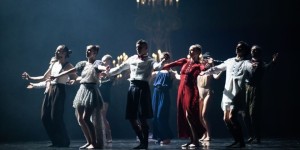


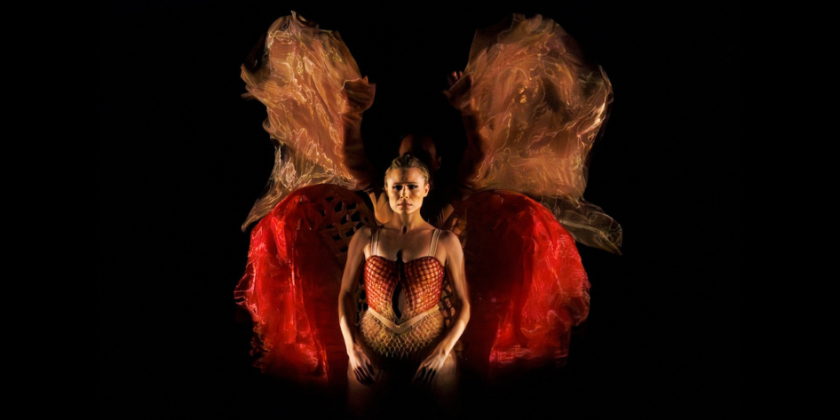
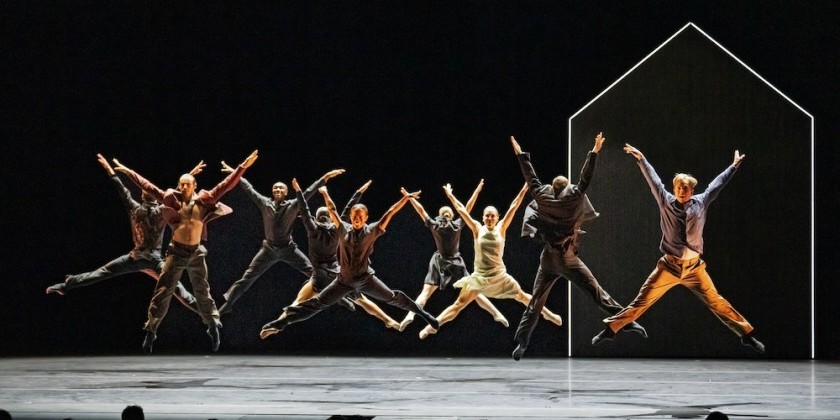
![IMPRESSIONS: Will Rawls' “[siccer]” at the Keith Haring Theatre at Performance Space New York](/images/features_large/20251119_WillRawls_siccer_PerformanceSpaceNY_WhitneyBrowne--55.jpg)
